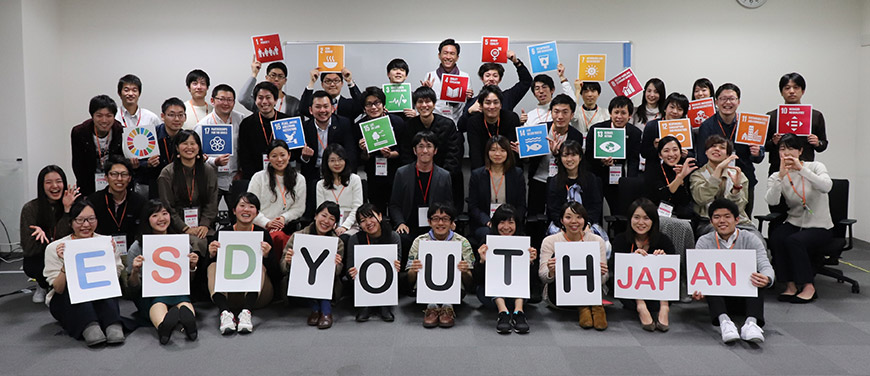
Creating a Better Future through Education
The 6th ESD Japan Youth Conference was organized by the Goi Peace Foundation in partnership with the Ministry of Education, Culture, Sports, Science and Technology of Japan (MEXT) and the Japanese National Commission for UNESCO, to offer students and young professionals from various fields a platform to come together and engage in dialogue and peer learning to enhance their practices in Education for Sustainable Development (ESD). It was held on 15-16 February, 2020, in Tokyo, after postponement due to a large typhoon last October.
The conference invited a diverse group of 45 youth leaders (18-35 years old) including teachers, university and graduate school students, NGO staff, government officials, company employees and others from across Japan, for the purpose of nurturing leadership skills, self-transformation through learning, co-creation of ideas and further advancement of this community.
The participants exchanged their knowledge and experiences, co-created shared visions of the future, and planned for collaborative projects in ESD, transcending differences of areas of expertise and roles in society.
The two-day conference was divided into five parts:
Part 2: “Connect deeply with oneself and with peers”
Part 3: “Discuss thoroughly and learn from each other”
Part 4: “Envision our future and begin our individual and shared challenges”
Part 5: “Step forward. Ending is a new beginning”
Five alumni of past conferences joined in the program support team and actively contributed to the conference, serving as emcees and in other roles as well.
Day 1
Part 1: “Begin the journey, get our footing, and relax”
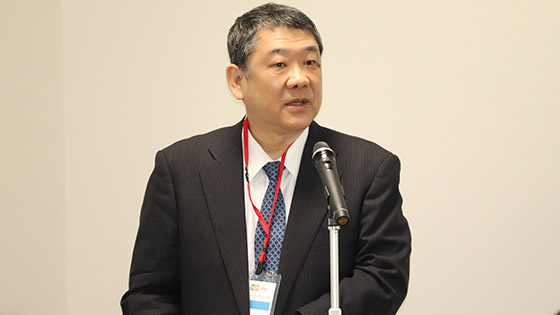
The two-day conference began with an opening address by Mr. Fumiyasu Hirashita, Deputy Director-General for International Affairs of MEXT (and Senior Deputy Secretary-General, Japanese National Commission for UNESCO). Mr. Hirashita stressed that youth play an important role globally towards achieving the United Nations Sustainable Development Goals (SDGs).
After Mr. Hirashita’s speech, participants relaxed with an icebreaker activity using a Native American dialogue method, in which they asked themselves the significance of ESD as well as the SDGs, and explored their own answers.
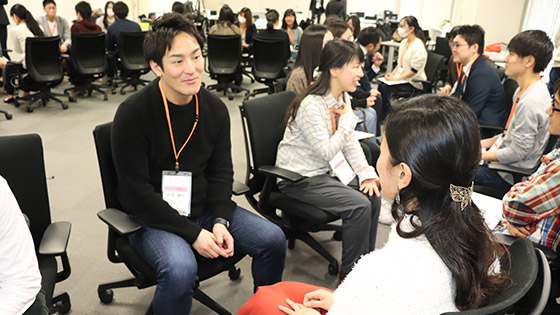
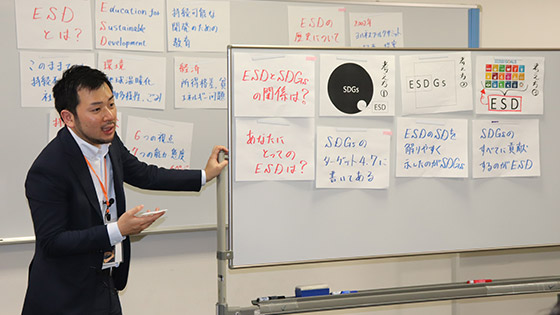
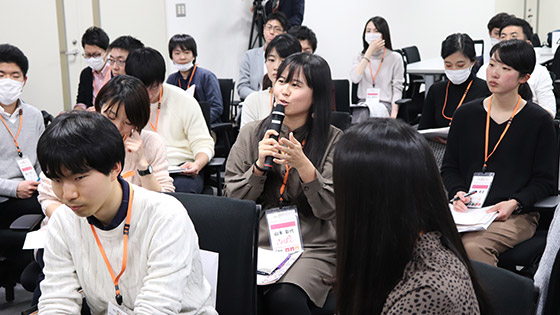
Part 2: “Connect deeply with oneself and with peers”
This part started with storytelling in small groups, to help participants connect more deeply with themselves and with their peers. They shared the main themes of their various ESD activities, how they got involved, the challenges they’ve had to overcome, and their future tasks and objectives.
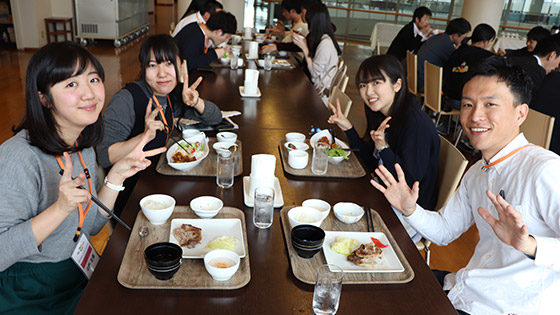
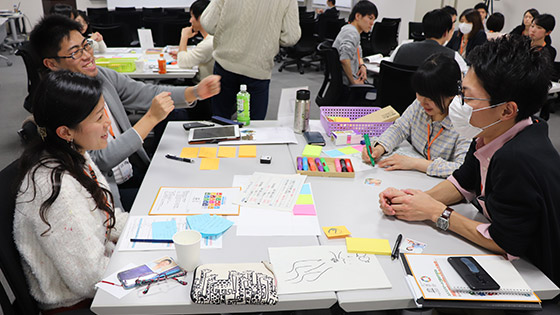
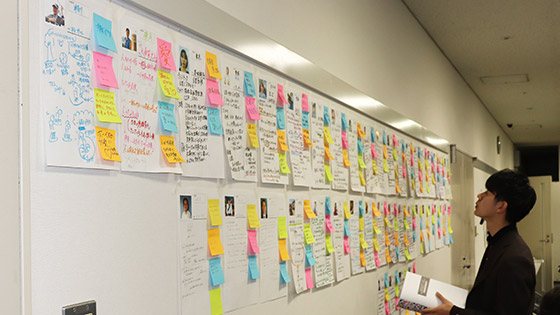
Part 3: “Discuss thoroughly and learn from each other”
Participants then listened to a special lecture by Mr. Soichi Ueda, Board Member of Think the Earth, to help develop their leadership skills. The theme of the lecture was “Global Perspectives and Social Design in the Future.”
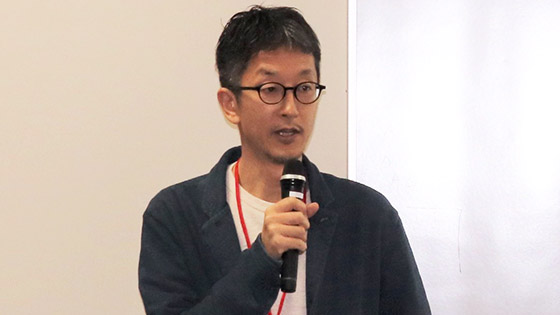
Mr. Ueda, a communications expert who has motivated people to think about the environment and society in various manners, noted that humanity obtained a view of a borderless earth for the first time 50 years ago, with a single picture of the earth floating in space. This led to the concept of the present-day SDGs, and also to our awareness of environmental protection—that we must save the earth, our HOME.
He told participants that, as global citizens, thinking of a better future means broadening our perspectives of time and space, thinking of the whole universe instead of only what is visible to our eyes.
After the session, the first day concluded with peer learning workshops. Each participant joined one of the four workshops, for a time of meaningful dialogue and learning from one another.
- How to implement the SDGs at school
- Drafting action plans for the environment on a local level
- Let’s try a participatory reading “Active Book Dialogue”
- ESDs that start with…
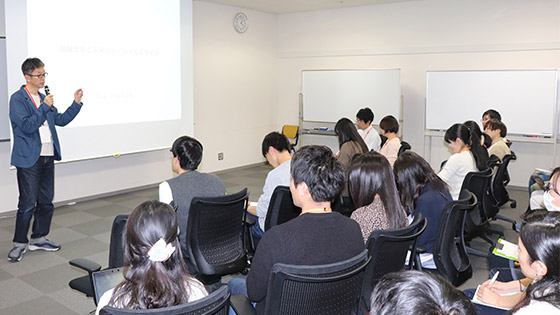
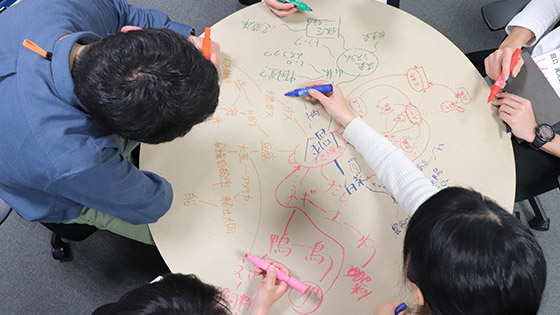
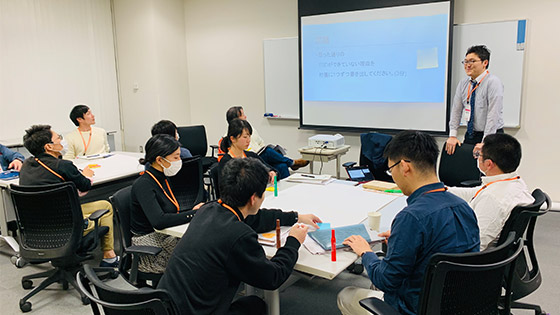
Day 2
Part 4: “Envision our future and begin our individual and shared challenges”
The second day began with a program for co-creating the future. Participants hopped on a ‘time machine’ and looked back at new developments over the past 15 years, and then forecasted changes expected to occur during the next 10 years.
One of the participants commented, “I felt that even a dream that seems impossible is not 100% impossible.” It was a time for everyone to sharpen his or her imagination.
In the latter half of this section, the second special lecture for nurturing leadership skills was given by Mr. Kenshu Kamura, Project Associate Professor of Tokyo Tech Academy for Leadership of the Tokyo Institute of Technology (and President of Non Profit Organizations Ba-to-Tsunagari Labo home’s vi). Mr. Kamura gave a talk on “tips for project management.”
Known for his commentary on Frederic Laloux’s bestselling book Reinventing Organizations: A Guide to Creating Organizations Inspired by the Next Stage of Human Consciousness, Mr. Kamura often quoted the author’s words during his talk. He told participants: “What is essential in project planning for bringing together people and influencing the society is to encounter what is most meaningful to yourself, with a clear purpose”.
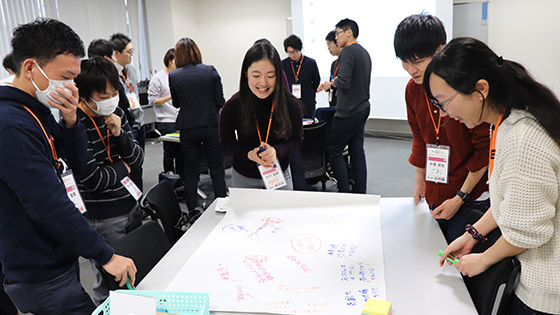
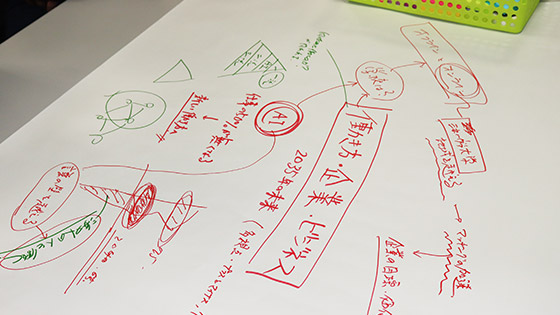
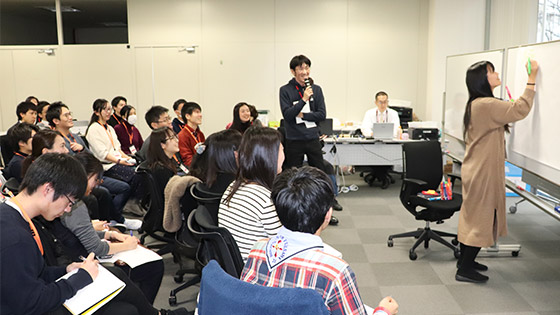
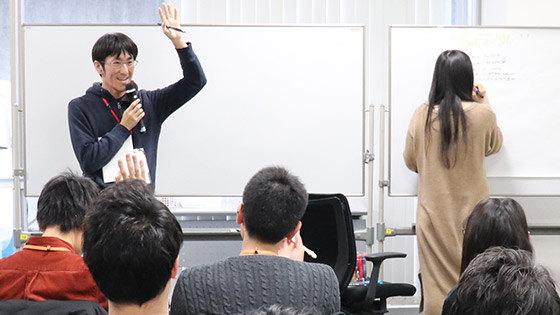
After Mr. Kamura’s lecture, the participants took some time for quiet self-reflection and for seeking out their own personal objectives.
Some of the participants shared their ideas for developing their own projects, and invited their like-minded colleagues to join them. Then, the participants were divided into different project groups to discuss the frameworks and details of these projects that encompassed their common interests.
Mentors from different sectors who were present as observers moved around the floor to stop at each table, giving advice and offering support to the participants.
As a result, ten joint projects were incubated. Their goals ranged from uplifting children’s self-esteem and adults’ feelings of self-approval, to the development of learning materials for marine plastic issues, to outdoor activities to better understand the SDGs. Each project team presented its discussions and project plans.
- ESD circle of educators
- Social businesses for SDGs
- ESD activities for oceans
- Enjoying life with a “loss of what is normal”
- ESD activities for afterschool
- Creating videos of stories of “loving” and “being loved”
- ESD story archives in Google Earth
- ESD to learn from outdoor activities (Part 1: for pupils)
- Our connected and broadened world
- Keeping in touch to find out everyone is fine
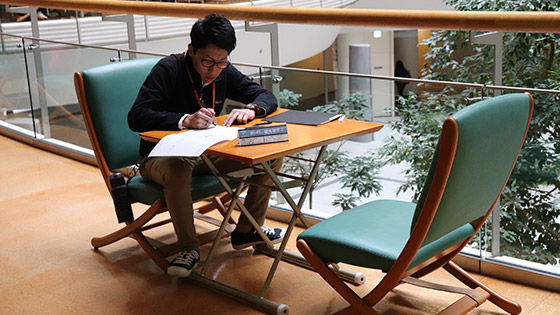
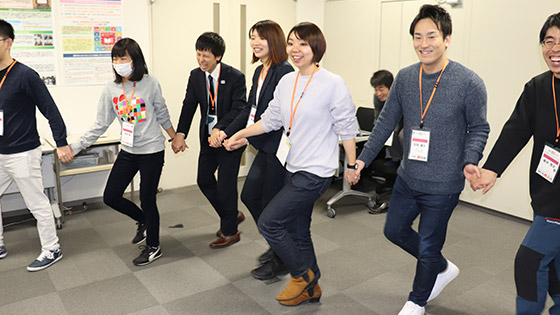
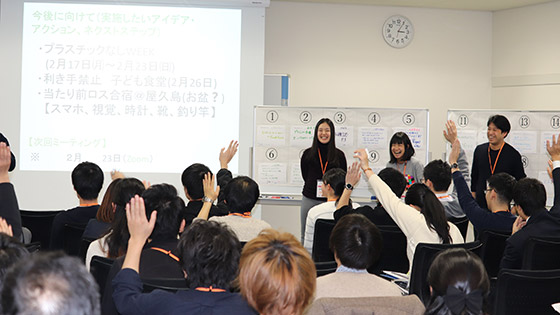
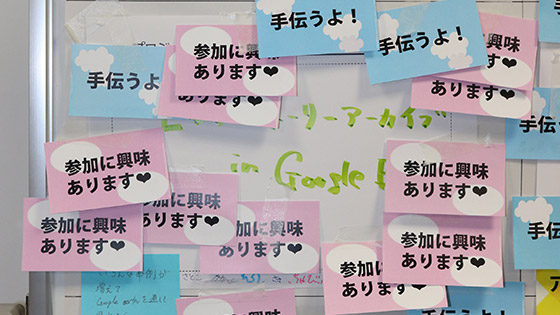
Part 5: “Step forward. Ending is a new beginning”
At the close of the conference, the 45 participants gathered in a large circle and shared with their colleagues of the past two days their personal commitments and action plans regarding how they will continue contributing to ESD and to society.
Participants’ reflections on the conference included the following:
- “There were many things to learn. The conference itself was a classroom.”
- “I learned some tips for teambuilding at my workplace (school).”
- “Although we work in different sectors, we are colleagues in that our goal is the same.”
- “I look forward to working with my colleagues, whom I met during this conference, on our new project.”
- “I would like to incubate a new business out of a joint project I took part in during this conference.”
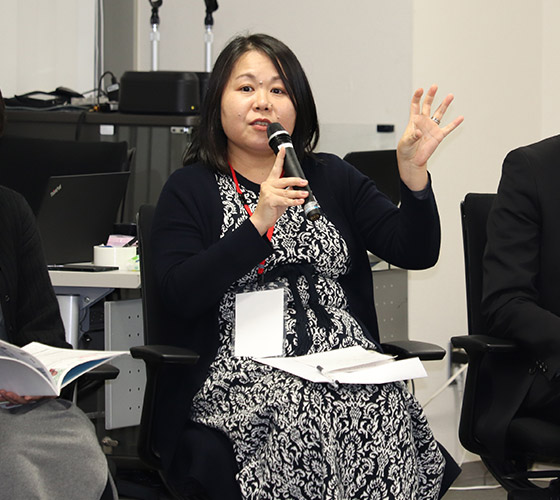
Ms. Sumiko Osugi, Deputy Secretary-General for International Affairs of MEXT, Japan National Commission for UNESCO, closed the conference with an encouraging message to the youth participants: “UNESCO defines education as ‘organized learning’ and has started discussing education in 2050. The top managers of major companies are also talking about society in 2045. As it takes time to deal with such a large-scale agenda, I hope you will continue to gain more experiences and develop your skills while networking.”
Thus, each participant stepped into the future with the belief and enthusiasm that they really can change the future through education.
We firmly believe that the community of “ESD Japan Youth”—now approximately 300 members including the new members from this conference—will continue to grow and contribute to the promotion of ESD and the achievement of the SDGs.
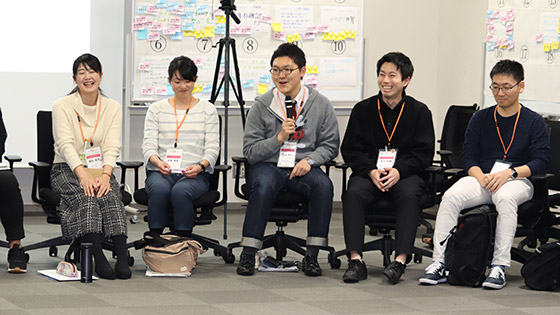
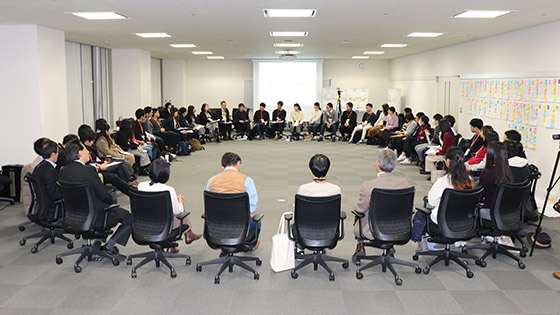
About the 6th ESD Japan Youth Conference
| Organized by | The Ministry of Education, Culture, Sports, Science and Technology of Japan Japanese National Commission for UNESCO The Goi Peace Foundation |
|---|---|
| Endorsed by | The Ministry of the Environment of Japan United Nations University Institute for the Advanced Study of Sustainability Asia-Pacific Cultural Centre for UNESCO (ACCU) National Federation of UNESCO Associations in Japan Japan Council on Education for Sustainable Development (ESD-J) Japanese Society of ESD ESD Resource Center of Japan ESD Resource Center of Kanto District, Japan |
| Supported by: | Non Profit Organizations Ba-to-Tsunagari Labo home’s vi Think the Earth Tokyo City University |
